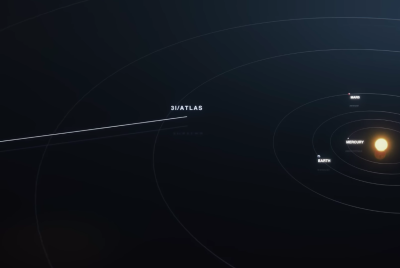Voyager 1 Reaches Interstellar Space 36 Years After Launch [VIDEO]

There is solid evidence Voyager 1 has left the heliosphere and entered interstellar space.
Scientists say the spacecraft became the first man-made object to enter interstellar space on 25 August last year.
Data from Voyager 1 show that the plasma densities around the spacecraft are consistent with theoretical predictions of the interstellar space.
Don Gurnett, principal investigator of Voyager's plasma wave science instrument at the University of Iowa, took measurements between April and May this year and found Voyager 1 was in a region of space with an electron density of about 0.08 per cubic centimetre.
Current models suggest interstellar space should have an electronic density of between 0.05 and 0.22 per cubic centimetre.

Ed Stone, Voyager project scientist based at the California Institute of Technology, Pasadena, said: "Now that we have new, key data, we believe this is humankind's historic leap into interstellar space.
"The Voyager team needed time to analyse those observations and make sense of them. But we can now answer the question we've all been asking: 'Are we there yet?' Yes, we are."
John Grunsfeld, Nasa's associate administrator for the Science Mission Directorate, said: "Voyager has boldly gone where no probe has gone before, marking one of the most significant technological achievements in the annals of the history of science, and as it enters interstellar space, it adds a new chapter in human scientific dreams and endeavours.
"Perhaps some future deep space explorers will catch up with Voyager, our first interstellar envoy, and reflect on how this intrepid spacecraft helped enable their future."
Last month, a study by Marc Swisdak published in The Astrophysical Journal Letters said Voyager 1 had left the solar system: "It's a somewhat controversial view but we think Voyager has finally left the solar system and is truly beginning its travels through the Milky Way," he said.

However, his theory could not be proved and a recent paper by Nasa had said the spacecraft was still travelling through the heliosphere. The discrepancy arose over what the boundary crossing into interstellar space should look like.
Voyager 1 launched in 1977 and is now over 11 billion miles away from earth. Gurnett described the moment they realised the spacecraft had reached interstellar space: "We literally jumped out of our seats when we saw these oscillations in our data - they showed us that the spacecraft was in an entirely new region, comparable to what was expected in interstellar space, and totally different than in the solar bubble.
"Clearly we had passed through the heliopause, which is the long-hypothesised boundary between the solar plasma and the interstellar plasma."
Bill Kurth, co-author of the study, said: "I think the Voyager mission is a much grander voyage of humankind than anyone had dreamed-to not only leave the Earth and tour the giant outer planets, but now to venture into interstellar space for the first time."
© Copyright IBTimes 2025. All rights reserved.






















